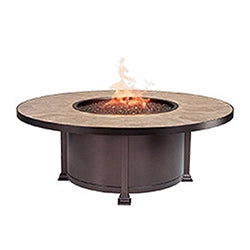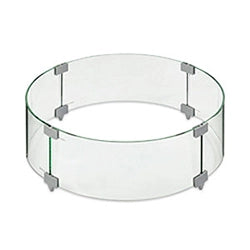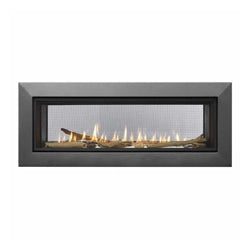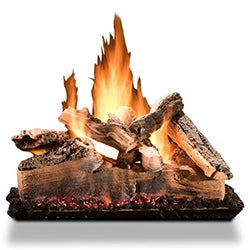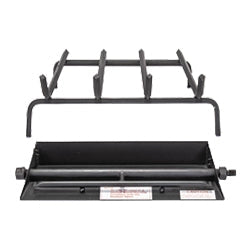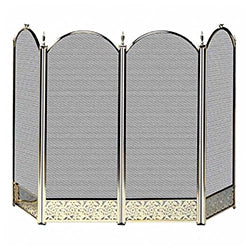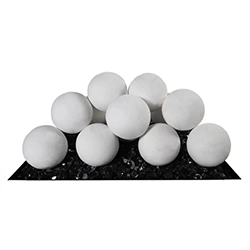Fuel
Whether you prefer the ambiance of a traditional wood burning fire feature or the convenience of a gas burning fire feature, there are some factors you should consider when narrowing down your selection. Wood burning fire features offer a campfire-like or cabin-esque experience that is ever so timeless. Depending on how often you plan on using your fire feature, wood burning fire features can require constant stocking and replenishment. Keep in mind that burning wood will produce sparks, ash, and embers.
In comparison, gas burning fire features do not produce more heat than burning actual wood, but they can come pretty close. Additionally, there are a lot of advantages to burning natural gas or propane rather than wood. Gas burning fire features are better for the environment as there is no mess, ash, or smell to deal with that is common with burning wood. Gas fire features do not produce sparks or embers that can start wildfires. Plus, they are efficient and easy to control. They also allow you to get very creative with your design and decor. Here's a chart comparing natural gas to propane gas.
| Natural Gas | Liquid Propane |
|
Advantages:
Disadvantages:
|
Advantages:
Disadvantages:
|
Ignition
If you're unsure which ignition type to choose, here's a breakdown:
Match Lit: While holding a long lighter over the burner in one hand, slowly turn the gas valve on to ignite.
CSA Match Lit: CSA is a commercial certification that is occasionally required for use of a fire pit in business locations but can also be used residentially.
Push-Button (or Spark) Ignition: Push and hold a button, (listen for clicking sound) which generates a spark to ignite pilot flame
AWEIS (All Weather Electric Ignition System): This ignition is wired for use with a switch or remote and includes a safety feature that automatically shuts off the gas when it detects the absence of flame. This ignition system can be used in all kinds of weather. In rain or wind, an AWEIS system will keep your fire feature lit. An electrical connection is required in order to run the unit.
CSA On/Off: (Same as AWEIS above but carries a CSA Certification) This electronic, remote control operated On/Off switch is certified for industrial use but can also be used residentially. An electrical connection is required in order to run the unit.
CSA High/Low: (Same as above but comes with a handheld remote that offers on/off and high/low flame height control). This electronic, remote control operated rheostat is certified for industrial use but can also be used residentially. An electrical connection is required in order to run the unit.







